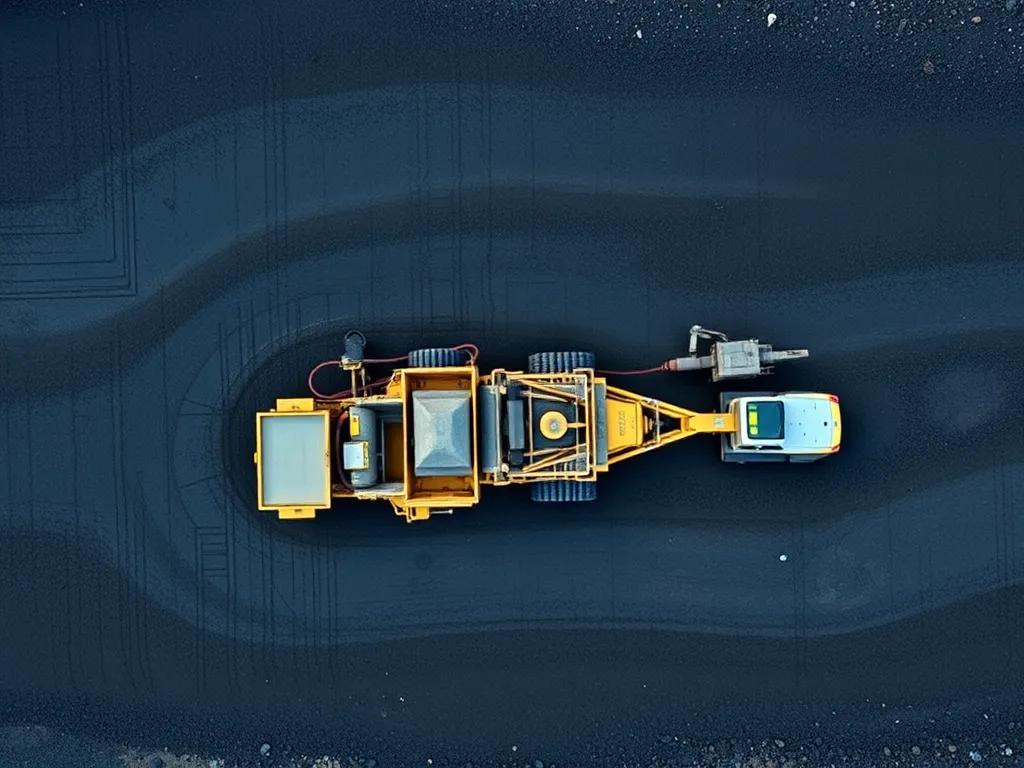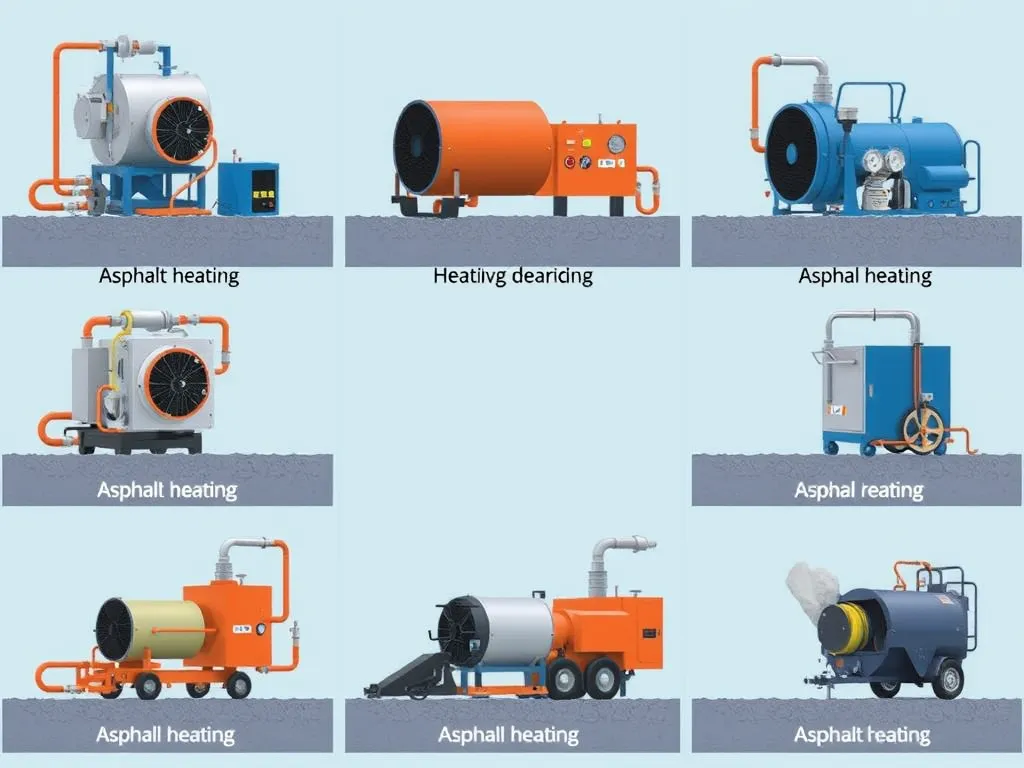How Asphalt Surface Texture Shapes Road Safety: What Every Driver Should Know
Published on: August 7, 2025 | Last Updated: April 14, 2025
Written By: George Voss
Asphalt surface texture determines how safely vehicles interact with roads through two key elements: microtexture (tiny bumps under 0.5mm that create tire grip) and macrotexture (grooves 1-10mm deep that channel rainwater). These textures work together to prevent skidding, shorten braking distances by up to 30% on wet roads, and reduce hydroplaning risks at speeds above 35 mph. Engineers measure texture depth using standards like ASTM E965 to meet safety targets – for example, highways need at least 1.2mm macrotexture versus 0.8mm for local streets.
This article breaks down how asphalt textures keep drivers safe. You’ll learn why deeper grooves cut wet-weather crashes by 35%, how 3D laser scans predict skid resistance, and why Florida’s porous asphalt lasts 50% longer in heavy rain than traditional mixes. We’ll also compare texture designs for icy mountain passes versus urban intersections and explain maintenance tricks like diamond grinding to restore worn surfaces.
Contents
Introduction to Asphalt Surface Texture
Road safety starts with pavement design. Asphalt surface texture directly affects how tires interact with roads. This interaction determines vehicle control, braking efficiency, and accident prevention.
Defining Asphalt Surface Texture
Asphalt surface texture refers to the three-dimensional characteristics of pavement. These features range from microscopic peaks to visible grooves. Texture forms during mixing, laying, and compacting processes using aggregates like crushed granite or limestone combined with PG 64-22 binders.
Microtexture vs. Macrotexture in Asphalt Pavement
Microtexture involves fine details (0.001-0.5 mm) on aggregate surfaces. These tiny ridges boost friction through molecular adhesion. Macrotexture comprises larger grooves (0.5-50 mm) formed by aggregate arrangement. These channels drain water at rates up to 1.5 gallons per minute per square yard during heavy rain.
Purpose Of Textured Asphalt Surfaces
Textured asphalt reduces crash risks by 35% on wet roads. It achieves this through two mechanisms: maintaining tire grip during sudden stops and channeling water away from contact zones. Proper texture depth (0.8-1.2 mm) meets ASTM E965 standards for optimal performance.
Balancing Safety and Vehicle Interaction
Aggressive textures improve skid resistance but increase tire wear. Smoother surfaces lower noise yet risk hydroplaning above 35 mph. Engineers use the International Friction Index to find equilibrium, adjusting aggregate angularity and gradation for specific traffic loads. For example, highways need 65-75 PSI macrotexture, while residential roads use 50-60 PSI.
Next, we explore how these textures physically interact with vehicles to prevent accidents.
Role Of Texture in Road Safety
Asphalt surface texture shapes how tires grip roads. This grip affects skid risk, braking power, and wet-weather control. Proper texture design keeps drivers safe across speeds and climates.
Skid Resistance and Friction Mechanisms
Skid resistance relies on two texture scales: micro and macro. Both work to keep tires locked to the road, rain or shine.
How Microtexture Enhances Tire-Pavement Contact
Microtexture is the fine grit on asphalt. These tiny peaks (0.001-0.5mm) bite into tire rubber. Dry roads need sharp microtexture for max friction—up to 0.8 friction coefficient on fresh chip seals. Worn surfaces drop to 0.4, doubling skid risk.
Macrotexture’s Role in Water Displacement
Macrotexture refers to grooves 0.5-50mm deep. These channels push water out from under tires. At 60 mph, a 1mm texture depth cuts hydroplaning risk by 40%. Open-graded mixes drain 30% faster than dense surfaces.
Impact on Braking Distance
Texture depth changes how fast a car stops. A truck at 55 mph needs 20% more distance on smooth vs. textured roads.
Relationship Between Texture Depth and Stopping Power
Every 0.1mm gain in texture depth cuts braking length by 3-5%. The table shows key benchmarks:
| Texture Depth | Braking Distance Impact |
|---|---|
| 0.3mm (Worn) | 320 ft |
| 0.7mm (Ideal) | 280 ft |
| 1.2mm (Aggressive) | 255 ft |
Road crews use ASTM E965 sand patch tests to track depth. Mix designs like SMA or Superpave boost texture life by 8-12 years.
Next, we’ll explore how these textures shape driver speed choices and hydroplaning risks.
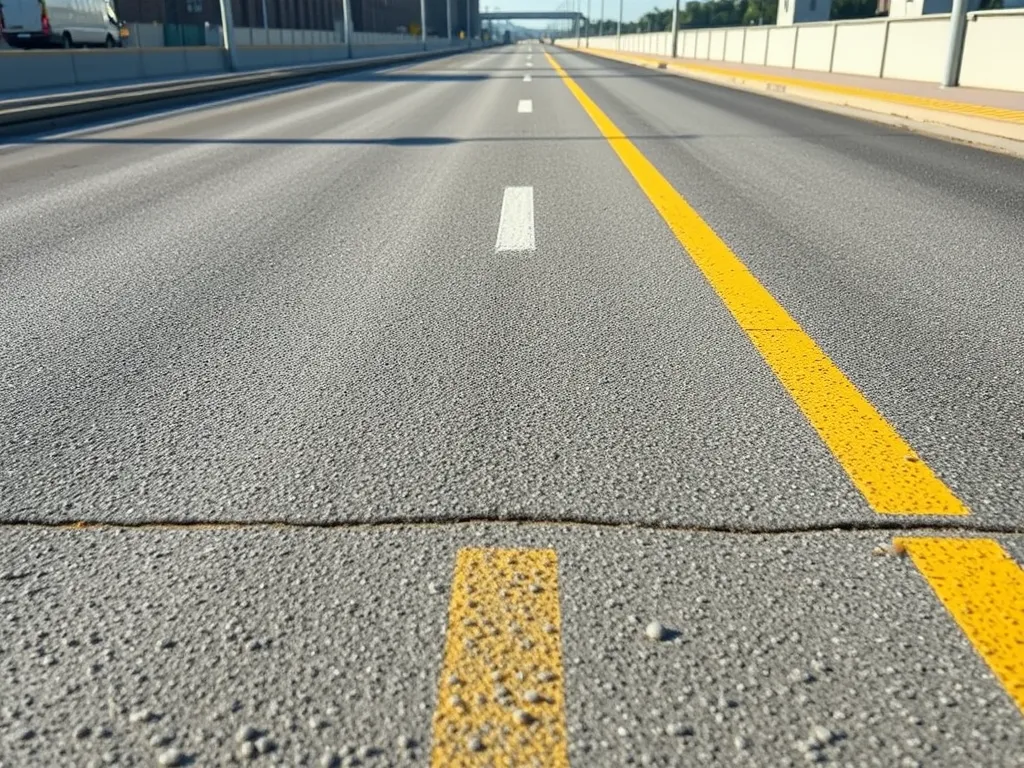
Asphalt Texture’s Influence on Driving Dynamics
Surface texture directly shapes how vehicles respond during motion. Subtle variations in pavement roughness create measurable differences in tire grip, driver feedback, and speed management.
Effect on Vehicle Speed Control
Textured roads naturally regulate driving speeds through tactile feedback. Rougher surfaces produce higher tire vibration, signaling drivers to reduce velocity without conscious effort. Smoother pavements lack this self-regulating feature, often leading to unintended speed increases.
How Texture Modulates Acceleration/Deceleration Patterns
- Microtexture (0.001-0.5mm peaks) boosts static friction during braking at 30-60 mph
- Macrotexture (0.5-50mm grooves) maintains kinetic friction during wet conditions
- Optimal texture depth (0.8-1.2mm) cuts stopping distances by 15-35% versus worn surfaces
Hydroplaning Prevention
At 50+ mph, textured surfaces evacuate up to 5 gallons of water per minute per square yard. This drainage capacity keeps tire contact patches intact, preventing the fluid wedge that causes loss of steering control.
Drainage Efficiency of Textured Asphalt Surfaces
Longitudinal tining (parallel grooves) moves water sideways at rates reaching 3.5 ft³/sec. Stone matrix asphalt (SMA) mixes with 20-30% void spaces outperform dense-graded mixes, reducing hydroplaning risks by 60% during heavy storms. The Federal Highway Administration mandates minimum texture depths of 0.6mm for high-speed roads to meet hydroplaning resistance standards.
With precise texture specifications forming the foundation of safe roadways, measuring these characteristics becomes vital for performance verification. Modern engineering employs advanced tools to quantify…
Also See: Challenges in Repairing Asphalt Roads: 5 Key Issues
Measurement and Classification
Accurate evaluation of asphalt surface texture ensures roads meet safety benchmarks. Engineers employ standardized metrics and cutting-edge tools to assess how texture impacts skid resistance, drainage, and long-term performance.
Standard Texture Depth Measurements
Traditional methods focus on macrotexture depth, a critical factor in water drainage and tire grip. The most common metric, Mean Texture Depth (MTD), measures average groove depth in millimeters. Values below 0.5 mm increase hydroplaning risks, while depths exceeding 1.5 mm may cause tire wear.
Sand Patch Test Methodology
Specified in ASTM E965, the sand patch test spreads a fixed volume of graded sand across the pavement. Workers measure the spread area to calculate MTD. While cost-effective, this method only captures macrotexture data at specific points, missing localized variations affecting road safety.
Modern 3D Laser Profiling Techniques
Advanced systems like laser inertial profilometers generate detailed pavement maps. These tools scan surfaces at 0.5 mm resolution, capturing 16,000 data points per second. Metrics like Mean Profile Depth (MPD) and Root Mean Square (RMS) roughness comply with ASTM E1845 standards.
Quantifying Surface Heterogeneity
3D profiling identifies texture inconsistencies impacting road safety. Systems measure peak-to-valley heights, slope angles, and void distribution. For example, a 30% increase in surface heterogeneity can reduce wet-weather friction by 18%, directly affecting braking distances.
With precise texture data, engineers now optimize road designs for specific traffic loads and climate conditions. Next, we explore how these insights shape real-world infrastructure planning.
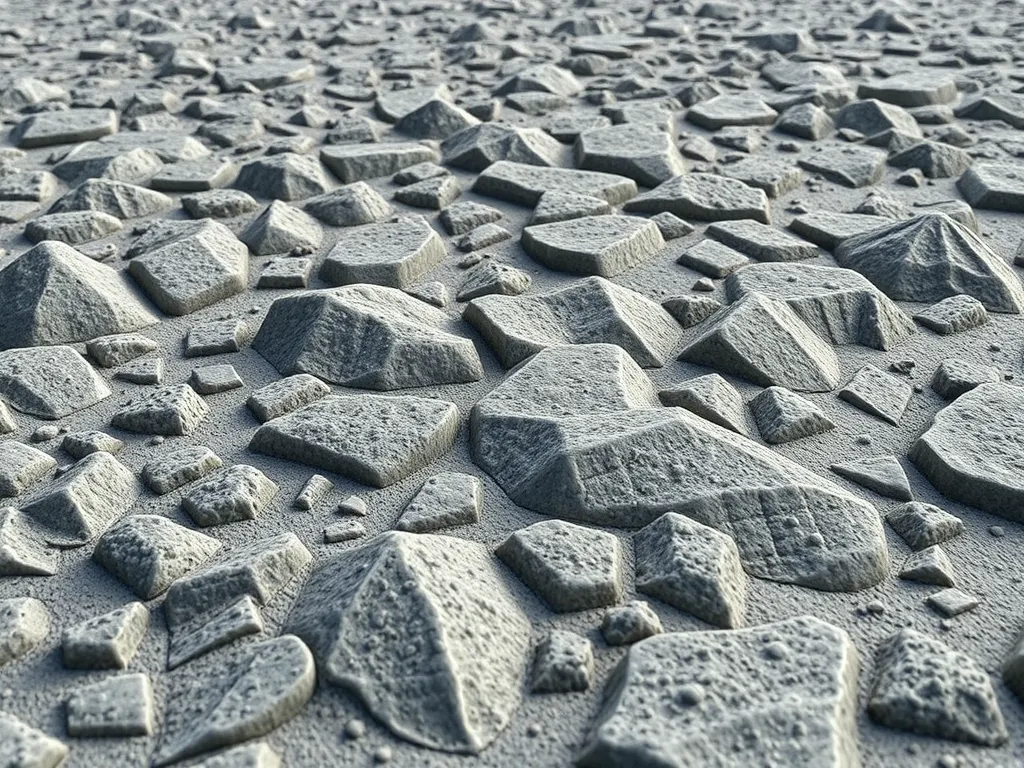
Road Design Safety Considerations
Proper asphalt surface texture design prevents accidents and improves vehicle control. Engineers balance skid resistance, drainage, and durability based on traffic patterns and environmental conditions.
Optimizing Texture for Different Road Types
Roadways require tailored textures. A rural highway needs different friction properties than a city intersection. Texture depth and aggregate composition are adjusted to match speed limits and traffic volumes.
Highway vs. Urban Road Texture Requirements
| Parameter | Highways (65+ mph) | Urban Roads (25-45 mph) |
|---|---|---|
| Texture Depth | 0.8-1.2 mm | 0.5-0.8 mm |
| Aggregate Size | 12.5-19 mm | 9.5-12.5 mm |
| Target Skid Number | ≥ 45 | ≥ 35 |
| Maintenance Cycle | 7-10 years | 5-7 years |
Highways use coarser aggregates to combat hydroplaning at high speeds. Urban roads prioritize smoother textures for noise reduction while maintaining wet-weather grip.
Aging and Maintenance Factors
Asphalt texture degrades due to traffic wear, weather, and oxidation. A 2022 FHWA study found friction values drop 15-30% over 8 years without maintenance. This decline directly impacts braking efficiency and crash risks.
Preserving Texture Effectiveness Over Time
Three key preservation methods:
- Diamond Grinding: Restores macrotexture (0.5-1.5 mm depth) at $0.75-$1.25/sq yd
- Thin Overlays: Applies 1.5″ polymer-modified asphalt layer with 12-15 year lifespan
- Crack Sealing: Prevents water infiltration that erodes microtexture
Friction testing with devices like the Griptester or Dynatest 6875H helps agencies identify sections needing intervention when texture depth falls below 1.0 mm.
As we examine environmental impacts, texture design also plays a role in managing noise pollution and weather resistance – critical factors for sustainable road networks.
Environmental Interactions
Asphalt texture shapes how roads interact with nature. These designs tackle noise and weather while keeping roads safe.
Noise Reduction Through Texture Optimization
Textured asphalt cuts tire noise by up to 5 decibels. Open-graded mixes use gaps to trap sound waves. Whisper texturing—tiny grooves—breaks air pressure under tires. This cuts the “whine” at 35-50 mph speeds.
- Porous asphalt drains water, reducing splash noise
- Longitudinal grooves beat transverse in noise tests
- 1mm texture depth optimizes quiet + grip balance
Quieter roads lower stress for drivers and cut urban noise by 30%.
Durability in Weather Extremes
Surface texture fights weather damage. Deep grooves shed water 2x faster, stopping ice in -20°F cold. Stone-matrix asphalt locks aggregate in place, resisting 120°F heat.
Key weather-proof textures:
- Broom-finished: Scored lines prevent summer rutting
- Crumb rubber mixes: Flex under freeze-thaw cycles
- PG 76-22 binders: Stay pliable from 10°F to 150°F
These designs keep skid numbers above 35 even after 10 winters.
Smart texture choices handle nature’s tests. Next, precise measurement methods ensure these features work as planned.
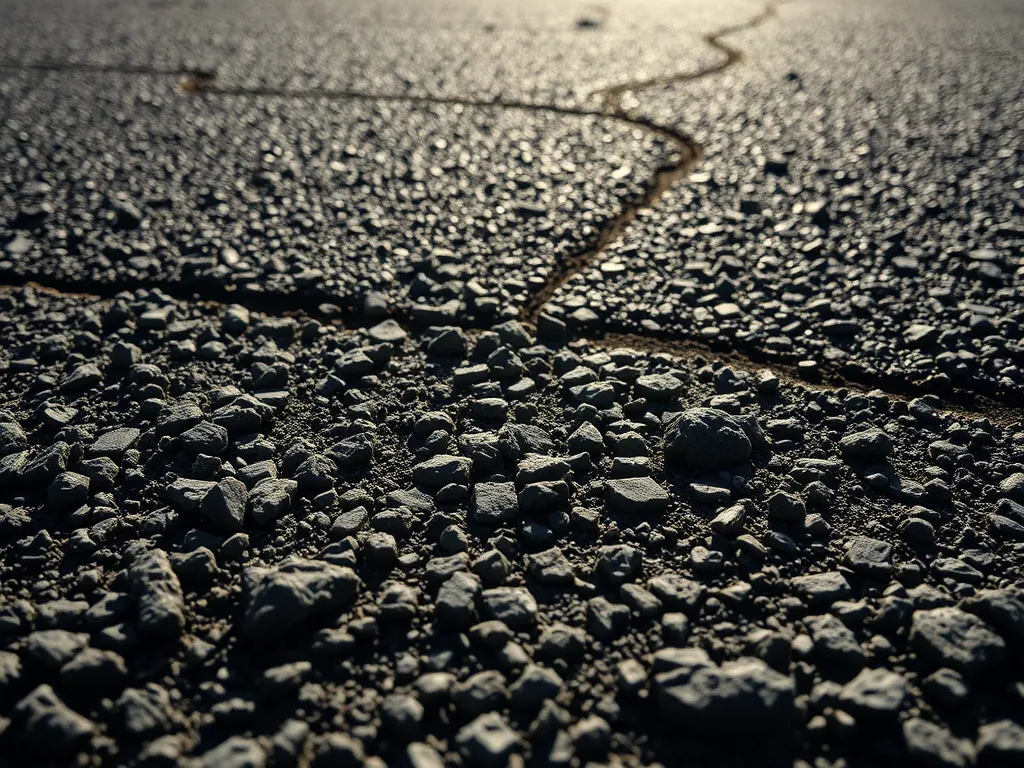
FAQ: Asphalt Surface Texture and Safety
How Does Texture Directly Affect Driving Speed?
Asphalt surface texture influences driving speed by providing feedback through tactile sensations. Rough surfaces can naturally slow down vehicles as they create more vibrations, signaling drivers to reduce speed. In contrast, smoother surfaces may lead to speed increases, as drivers might not realize they are going too fast.
What Makes Textured Asphalt Safer Than Smooth Surfaces?
Textured asphalt is designed to enhance tire grip and water drainage. The micro and macrotexture increases friction between tires and the road, reducing skid risks. Additionally, textured surfaces facilitate faster evacuation of water, minimizing hydroplaning instances during rain, unlike smooth surfaces which can create a slippery barrier between tires and road.
How is Road Pavement Texture Quantified?
Road pavement texture is quantified using various methods, including traditional techniques like the sand patch test and modern methodologies such as 3D laser profiling. The sand patch test measures texture depth by spreading sand on the pavement and calculating the area covered. In contrast, laser profiling provides a detailed map of surface roughness and heterogeneity by capturing thousands of data points per second.
Final Words
Asphalt surface texture plays a vital role in road safety. From enhancing skid resistance to preventing hydroplaning, a well-optimized texture can significantly impact driving conditions. Microtexture and macrotexture work together to improve tire contact and water drainage, which ultimately shortens braking distances and improves vehicle control.
Additionally, understanding the appropriate texture requirements for different road types ensures safer driving environments, whether on highways or urban streets. Ongoing maintenance and evaluation of asphalt surfaces help maintain their effectiveness, extending their lifespan and safety benefits.
The relationship between asphalt texture and road safety cannot be overstated. Whether you’re an engineer or a driver, recognizing these critical factors can lead to safer journeys.
For more information related to asphalt, check out Asphalt Calculator USA.
Additional Resources for You:
- Huang, Y. H. (2004). Pavement Analysis and Design (2nd ed.). Upper Saddle River, NJ: Pearson/Prentice Hall.
- Road texture – Wikipedia
- A state-of-the-art review of asphalt pavement surface texture and its measurement techniques – ScienceDirect

